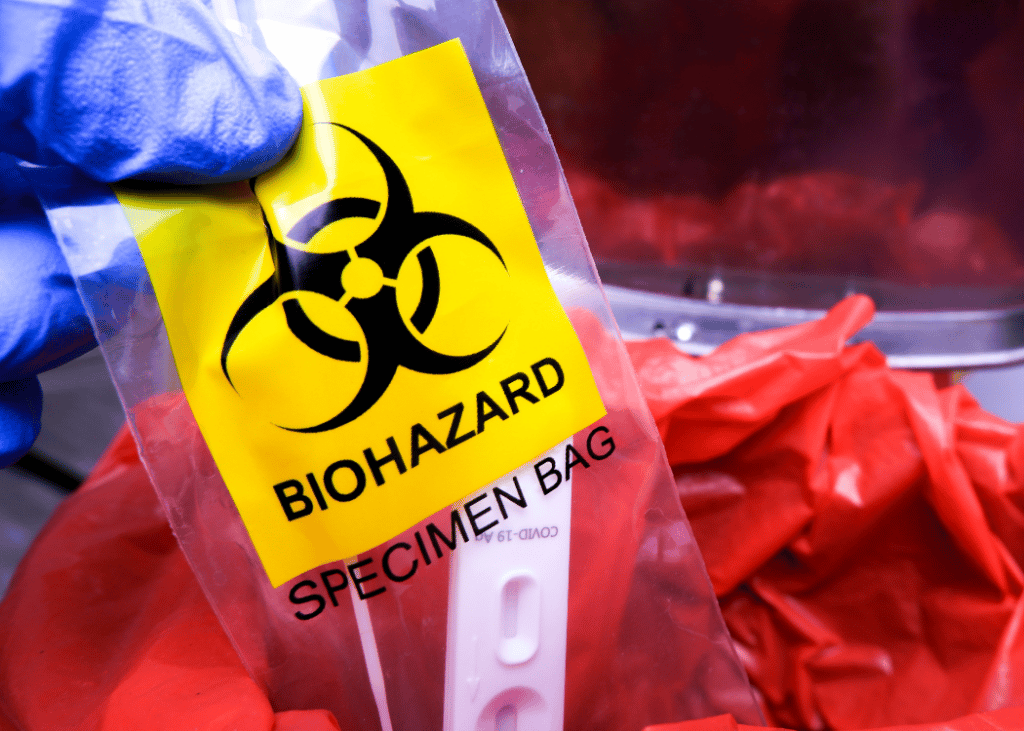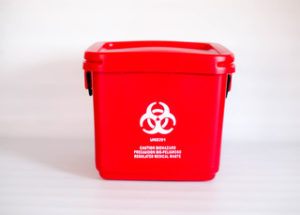Medical Waste Removal Excellence: Your Relied On Companion in Safe Biohazard Disposal
Medical Waste Removal Excellence: Your Relied On Companion in Safe Biohazard Disposal
Blog Article
Discovering Different Waste Disposal Options for a Cleanser Environment
In the search of a cleaner atmosphere, the management of waste disposal has actually arised as an essential focal point for sustainable development. With a wide variety of waste disposal options available, varying from conventional landfill techniques to innovative waste-to-energy innovations, the choice of just how we handle our waste has far-ranging ramifications for our planet's health.
Recycling Techniques
Executing efficient recycling techniques is crucial in decreasing waste and advertising sustainability in our environment. Recycling involves the process of transforming waste materials into multiple-use things to prevent unnecessary disposal.
An additional essential recycling technique is composting, which includes decaying natural waste like food scraps and backyard trimmings into nutrient-rich dirt. This procedure not only diverts organic waste from land fills but also produces a useful source for horticulture and agriculture. Furthermore, upcycling is an innovative recycling approach that entails changing old or discarded materials into products of better or value. By including these various recycling methods into our waste monitoring techniques, we can significantly minimize our environmental footprint and relocate towards an extra sustainable future.

Composting Methods
Reliable waste administration techniques, such as recycling methods, lead the means for a cleaner environment, and now, shifting the focus to 'Composting Techniques', we check out lasting ways to decay organic waste for environmental advantage. medical waste removal near me.
Composting is a natural process that changes organic waste, like food scraps and yard trimmings, into a nutrient-rich dirt change. The trick to effective composting depends on producing the appropriate balance of eco-friendly materials, such as vegetables and fruit scraps, and brown materials, like dried out twigs and leaves. These materials disintegrate with the aid of microbes, damaging down the waste right into valuable garden compost.
There are various composting techniques readily available to fit different requirements. Standard yard composting includes layering organic materials in a bin or pile and regularly transforming the blend to freshen it. Vermicomposting, on the various other hand, makes use of worms to damage down natural issue into compost (click here). For those with restricted area, interior composting systems offer a convenient remedy. By using composting techniques, we can decrease the amount of waste sent to landfills while producing a useful item for improving dirt and sustaining plant development.
Incineration Benefits And Drawbacks
Incineration, as a garbage disposal technique, provides both advantages and negative aspects that warrant cautious consideration in the world of sustainable waste management practices. On the silver lining, incineration can dramatically minimize the volume of waste, decreasing the demand for garbage dump space and possibly reducing greenhouse gas emissions. Incineration additionally permits the healing of energy via the generation of power or heat, adding to source recovery. The process can be made use of to ruin unsafe compounds, offering a secure technique for dealing with particular types of waste that might pose dangers to public health and wellness and the setting if left neglected.
Nonetheless, there are noteworthy drawbacks to incineration. One major worry is the possible launch of damaging pollutants right into the air, such as dioxins, hefty steels, and particle issue, which can have adverse impacts on human health and the environment. Furthermore, the high preliminary investment and functional expenses of incineration facilities present financial obstacles, making it a much less cost-effective option contrasted to various other waste management techniques. Cautious tracking and law are vital to mitigate these negative impacts and maximize the benefits of incineration as part of a detailed waste monitoring strategy.
Land Fill Management Strategies
Landfills play a vital duty in waste monitoring and ecological preservation by supplying a control system for the disposal of solid waste products. Reliable garbage dump administration methods are necessary to minimize ecological influences and make sure the long-lasting sustainability of these waste disposal sites. One essential technique appertains waste compaction to maximize making use of readily available area within the garbage dump (click here). By compacting the waste, the volume is decreased, permitting more waste to be accommodated gradually.
In addition, the implementation of day-to-day cover methods is crucial in minimizing odors, preventing litter, and reducing the attraction of bugs. Covering the disposed waste at the end of every day aids to contain odors and prevent potential ecological contamination. Additionally, the surveillance of landfill gas discharges and leachate levels is crucial in making sure that ecological criteria are satisfied which any possible risks to surrounding environments are minimized.

Waste-to-Energy Technologies
Among the ingenious methods to waste management involves harnessing Waste-to-Energy modern technologies to convert strong waste right into usable energy resources. Waste-to-Energy (WtE) technologies incorporate a variety of procedures that aim to draw out energy from waste materials via thermal, his response chemical, or organic ways. This conversion procedure not only lowers the volume of waste that ends up in garbage dumps yet likewise produces useful energy resources such as power, warm, or biofuels.
Incineration involves shedding waste at high temperature levels to produce heat and power. Gasification converts waste into a syngas, which can be made use of for power generation or chemical production.
Applying Waste-to-Energy innovations can help reduce ecological issues connected with typical waste disposal methods while at the same time supplying a renewable resource resource. Cautious consideration has to be provided to exhausts control and guaranteeing the sustainability of feedstock materials for these technologies to be genuinely helpful for a cleaner atmosphere.

Verdict
To conclude, checking out various garbage disposal options such as reusing, composting, incineration, garbage dump management, and waste-to-energy modern technologies is essential for promoting a cleaner setting - click here. Each method has its own advantages and difficulties, however by utilizing a combination of these methods, we can work in the direction of reducing the amount of waste that winds up in landfills and inevitably add to an extra lasting future for generations ahead
With a wide variety of waste disposal choices available, varying from conventional garbage dump approaches to innovative waste-to-energy innovations, the choice of just how we handle our waste has far-ranging ramifications for our earth's well-being. medical waste removal service.Incineration, as a waste disposal method, provides both advantages and downsides that merit mindful factor to consider in the world of sustainable waste management techniques.Garbage dumps play an essential role in waste administration and ecological conservation by offering a control system for the disposal of strong waste materials. By compacting the waste, the volume is minimized, enabling for even more waste to be accommodated over time
One of the innovative approaches to waste management includes utilizing Waste-to-Energy modern technologies to convert strong waste right into functional energy sources.
Report this page